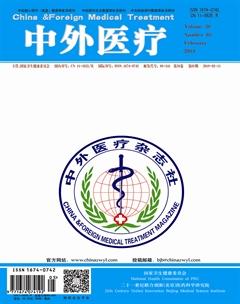基层医院老年白内障患者超声乳化术预后效果及并发症危险因素分析
钟启文 李清云
[摘要] 目的 探究基层医院老年白内障患者行超声乳化手术效果,并分析并发症发病情况,从而为预防手术并发症,提高手术效果提供科学的参考。 方法 该研究方便选择2017年1月—2018年1月期间因白内障入院接受超声乳化手术的老年患者210例作为研究对象进行回顾性分析,记录患者出现术中、术后出现并发症的例数,并分析并发症发生原因,通过病例筛选法,研究组为存在并发症的老年白内障患者43例(50只眼),对照组是随机抽取未出现并发症的60例患者(70只眼)。 结果 在基层医院行超声乳化手术并发症主要包括后囊膜破裂、虹膜损伤、角膜内皮水肿等;研究组患者术前视力低于0.1者(36.00%)高于对照组(15.71%),差异有统计学意义(χ2=6.549,P=0.01);研究组患者光感-手动(26.0%)、数指(22.0%)高于对照组(8.57% 5.71%),差异均有统计学意义(P<0.05);将术后是否出现并发症作为作为因变量,多因素logistic回归分析结果显示冠心病(OR=2.609,P=0.037)、晶状体核分级(OR=3.368,P=0.011)、术前视力(OR=2.431,P=0.016)、玻璃体手术史(OR=2.365,P=0.038)、切口靠前(OR=2.583,P=0.015)、后弹力层撕脱(OR=2.476,P=0.017)与白内障超声乳化手术并发症呈相关性(P<0.05)。两组患者术后最佳矫正视力对比,研究组患者术后1 d(t=3.979,P=0.0001)和术后1周视力(t=4.093,P=0.0001),均相对于对照组,差异有统计学意义(P<0.05)。 结论 针对基层医院开展的老年白内障患者白内障超声乳化术时,需要积极提升手术质量、熟练掌握手术技巧,争取零失误。针对高危因素,采用多种途径进行干预,减少术中、术后并发症出现,促進术后视力恢复。
[关键词] 白内障;超声乳化手术;基层医院;并发症
[中图分类号] R779.66 [文献标识码] A [文章编号] 1674-0742(2019)02(b)-0037-04
Analysis of Prognosis and Risk Factors of Phacoemulsification in Elderly Patients with Cataract in Primary Hospitals
ZHONG Qi-wen, LI Qing-yun
Wuping County Hospital, Longyan, Fujian Province, 364300 China
[Abstract] Objective To investigate the effect of phacoemulsification in elderly patients with cataract in primary hospitals, and to analyze the incidence of complications, so as to provide a scientific reference for preventing surgical complications and improving the surgical results. Methods A total of 210 elderly patients who underwent phacoemulsification after cataract surgery from January 2017 to January 2018 were convenient retrospectively analyzed. The number of complications occurred during and after surgery was recorded. The causes of complications were analyzed. The case screening method was performed in 43 patients (50 eyes) with complication of elderly cataract. The control group was randomly selected from 60 patients (70 eyes) who had no complications. Results The complications of phacoemulsification in primary hospitals included posterior capsule rupture, iris injury, and corneal endothelial edema. The preoperative visual acuity of the study group was less than 0.1 (36.00%), which was higher than that of the control group (15.71%), with statistical significance (χ2=6.549, P=0.01); light sensitivity-manual (26.0%) and number (22.0%) were higher in the study group than in the control group (8.57% 5.71%), the difference was statistically significant (P<0.05); whether the postoperative complications occurred as a dependent variable, multivariate logistic regression analysis showed coronary heart disease (OR=2.609, P=0.037), lens nuclear grading (OR=3.368, P=0.011), preoperative visual acuity (OR=2.431, P=0.016), vitrectomy history (OR=2.365, P=0.038), incision front (OR=2.583, P=0.015), posterior elastic layer avulsion (OR=2.476, P=0.017) was associated with complication of phacoemulsification (P<0.05). The best corrected visual acuity was compared between the two groups. One day after surgery (t=3.979, P=0.000 1) and one week postoperative visual acuity (t=4.093, P=0.000 1), the difference was compared with the control group, being statistically significant (P<0.05). Conclusion In the phacoemulsification of cataract patients with cataract in primary hospitals, it is necessary to actively improve the quality of surgery, master the surgical skills, and strive for zero mistakes. In response to high-risk factors, multiple interventions are used to reduce intraoperative and postoperative complications and to promote postoperative visual recovery.

